Housing and Equity
New Jersey’s traditional approach to housing resulted for a long time in concentrated poverty in urban areas and migration of both wealth and jobs to the suburbs. The lack of housing near good jobs reduced opportunities for families with modest incomes to live near where they work. New Jersey will need to leverage market forces and public policy to create housing opportunities for lower-income households in high-opportunity places, including its revitalizing cities, and especially near transit. Simultaneously, the state’s housing and investment policies should support the strategic rebuilding of weak markets to create vibrant, mixed-income communities.

Elizabeth is nestled on the shore of Newark Bay in Union County, a dense, urban enclave in the heart of the Meadowlands estuary and wetlands. Our neighbors include: the Newark Liberty International Airport, where planes fly by my apartment multiple times a day creating noise nuisance.
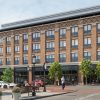
Without a safe, stable place to call home, how can people achieve any personal goals?” asked Department of Community Affairs (DCA) Commissioner Jacquelyn Suárez. Her opening remarks kicked off the session, “Housing: What’s Next in New Jersey?” at the 2024 NJ Planning and Redevelopment Conference.

The rising costs of housing in New Jersey are affecting everyone, especially individuals and households at the lower end of the income spectrum. New Jersey’s unique Mount Laurel doctrine is meant to address the need for housing for lower-income households, but it also indirectly has a major effect on the supply of market-rate multi-family units in the process.
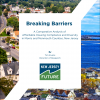
New Jersey is an expensive state, with among the highest housing costs in the country. It is also one of the most segregated states in the nation by both income and race, despite being one of the most racially diverse states overall. A new report from New Jersey Future explores the relationship between the enforcement of housing requirements, housing affordability, and racial and economic diversity, using a comparison between two demographically similar suburban counties—Morris and Monmouth—that followed different trajectories in complying with New Jersey’s affordable housing obligations.

2023 was a year full of many unpredictable environmental events ranging from major rainfall to extreme heat to a collapsed highway overpass. Our daily newsletter “What We’re Reading” brings our readers the most up-to-date articles covering our New Jersey Future issue areas and major developments in the Garden State.
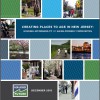
In this report, New Jersey Future analyzed housing affordability in each New Jersey municipality, to see where households headed by someone 65 or older have high housing costs. The places where housing cost burden is greatest fall into two groups: towns that are expensive for everyone, and towns that are dominated by larger, single-family housing stock. December 2015.
An interim report, three years after Hurricane Sandy, on New Jersey Future’s groundbreaking local recovery planning manager program, including lessons learned and recommendations. October 2015.
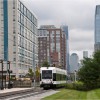
An analysis of household income distributions in the neighborhoods around New Jersey’s transit stations shows that not all station areas offer the benefits of transit access across all income levels. June 2015.

2016 Smart Growth Awards: Alfred C. Koeppe, business leader and champion for economic development in New Jersey, is the recipient of the 2016 Cary Edwards Leadership Award.
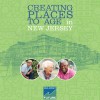
There is a significant mismatch in New Jersey between where large numbers of older residents live and which municipalities are most prepared to accommodate them. This report matches every municipality against four age-friendliness indicators, and analyzes the degree to which New Jersey’s older residents are living in places that, from a land-use perspective, are not prepared to accommodate their changing needs. January 2014.
See all New Jersey Future Blog posts and articles in this category »
Reports, Presentations and Testimony
- Creating Great Places to Age: Aging-Friendly Land-Use Implementation Plan for the Village of Ridgewood (Aug. 2020)
- 03/22/2019: Comments on Executive Order 23 Draft Guidance
- 02/14/2019: Testimony on A2697-S1783
- Creating Great Places to Age: Aging-Friendly Land-use Assessment For the Village of Ridgewood (Aug. 2018)
- Creating Great Places to Age: Land Use Analysis of Aging Friendliness (Westwood Borough, July 2018)
- Rename to: Creating Great Places to Age: Land Use Analysis of Aging Friendliness (Teaneck, Feb. 2019)
- APA Conference Places To Age Best Practices
- New Jersey Future Demographic Trends by Age September 2017
- New-Jersey-Future-Assessment-of-the-NJLIHTC-program
- New Jersey Future Assessing the Federal Approach to Identifying Gentrification 08-16 (Intern Report)
- New Jersey Future 2017 Gubernatorial Platform
- Strategic Recovery Planning Report Maurice River 05-2015
- Strategic Recovery Planning Report Commercial 12-2015
- League of Municipalities Article on Aging in Community April 2016
- Final Jersey City to Proacitvely Test Water Supply Press Release %282%29
- New Jersey Future Housing Affordability and Aging-Friendly Communities
- Housing Affordability and Aging-Friendly Communities Housing Cost-Burden Municipal Data by Municipality
- Housing Affordability and Aging-Friendly Communities Housing Cost-Burden Municipal Data by Cost Burden Rank
- NJFuture-In-Deep-10-15-WEB
- Case Study: Paterson
- Case Study: Jersey City
- Case Study: Hoboken
- Case Study: Camden
- Ripple Effects
- Van Abs: Water Infrastructure in New Jersey's CSO Cities
- Creating Great Places To Age in New Jersey
- Creating Places To Age in New Jersey Municipal Best Practices
- Creating Places To Age in New Jersey municipal data
- Creating Places To Age Bergen-Passaic Supplement
- 03/19/2013: New Jersey Future CDBG-DR comments
- Targeting Transit -- New Jersey Future
- 05-2009 Smart Housing Incentives Act - Summary
- Route 1 Planning Through Partnerships
- 06/17/2011: Amicus brief: Mount Laurel
- Race to the Middle: The Homogenization of New Jersey's Population Density
- Realistic Opportunity? The Distribution of Affordable Housing and Jobs in New Jersey
- Getting to Work 11-08











